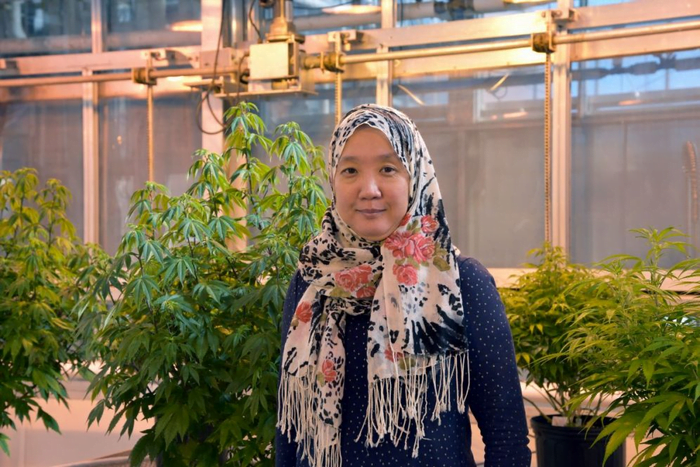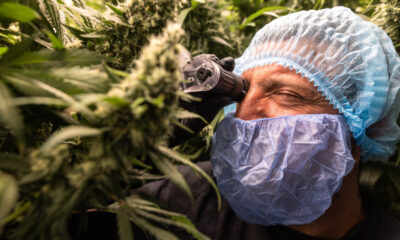Scientists at the University of Connecticut are using the light-producing genes in fireflies to understand cannabis biology. The researchers hope the study will aid hemp farmers with the common problem of overproducing THC.
Cannabinoids are produced by trichomes, small spikey protrusions on the surface of cannabis flowers. Beyond this fact, scientists know very little about how cannabinoid biosynthesis is controlled.
Researchers at the University of Connecticut (UConn) are using funding from the US Department of Agriculture to discover the underlying molecular mechanisms behind trichrome development and cannabinoid synthesis. To do this, they will be looking at firefly genes.
The project is led by UConn research assistant professor Yi Ma and Gerry Berkowitz, professor in the College of Agriculture, Health and Natural Resources.
Berkowitz and Ma discovered factors responsible for trichome initiation and cannabinoid biosynthesis. In this case, the factors cause epidermal cells on the flowers to morph into trichomes. The team’s discovery was recently published as a feature article in Plants. Related trichome research was also published in Plant Direct. Due to the gene’s potential economic impact, UConn has filed a provisional patent application on the technology.
With this new grant, the researchers will continue to explore how these factors play a role in trichome development during flower maturation. To do this, the researchers are making copies of firefly luciferase, the gene that allows fireflies to light up. The luciferase gene will be fused to the cannabis plant to generate light, indicating when there is an increase in trichome development.
“It’s a nifty way to evaluate signals that orchestrate cannabinoid synthesis and trichome development,” says Berkowitz.

Ma and Berkowitz will use an instrument called a luminometer, which measures how much light comes from the sample. This will tell the researchers if the regions they are looking at are controlled by the factors responsible for increasing trichome development.
Most cannabis farmers grow hemp, a variety of cannabis with naturally lower THC levels than cannabis. Currently, most hemp varieties that have high CBD levels also contain THC, sometimes at higher levels than is allowed.
This is likely because the hemp plants still make the enzyme that produces THC. In countries and regions where THC is illegal, hemp farmers must ensure the plant contains less than a certain percentage of THC. If it exceeds the limit, in many cases it must be destroyed. A better understanding of how the plant produces THC means scientists could selectively knock out the enzyme that synthesises THC using genome editing techniques. This would produce plants with lower levels of or no THC.
“We envision that the fundamental knowledge obtained can be translated into novel genetic tools and strategies to improve the cannabinoid profile, aid hemp farmers with the common problem of overproducing THC, and benefit human health,” the researchers say.
On the other hand, this knowledge could lead to the production of cannabis plants that produce more of a desired cannabinoid, which could prove helpful in altering the content of medical cannabis products.
In addition to sharing these findings with cannabis scientists, industry and growers, the researchers will incorporate this new knowledge into UConn courses on cannabis horticulture. The grant will also support the training of undergraduates interested in cannabis research, providing them with the skills to enter the workforce.

 News6 months ago
News6 months ago
 Science5 months ago
Science5 months ago
 Industry6 months ago
Industry6 months ago
 News6 months ago
News6 months ago
 News5 months ago
News5 months ago
 Health4 months ago
Health4 months ago
 News5 months ago
News5 months ago
 Health3 months ago
Health3 months ago













